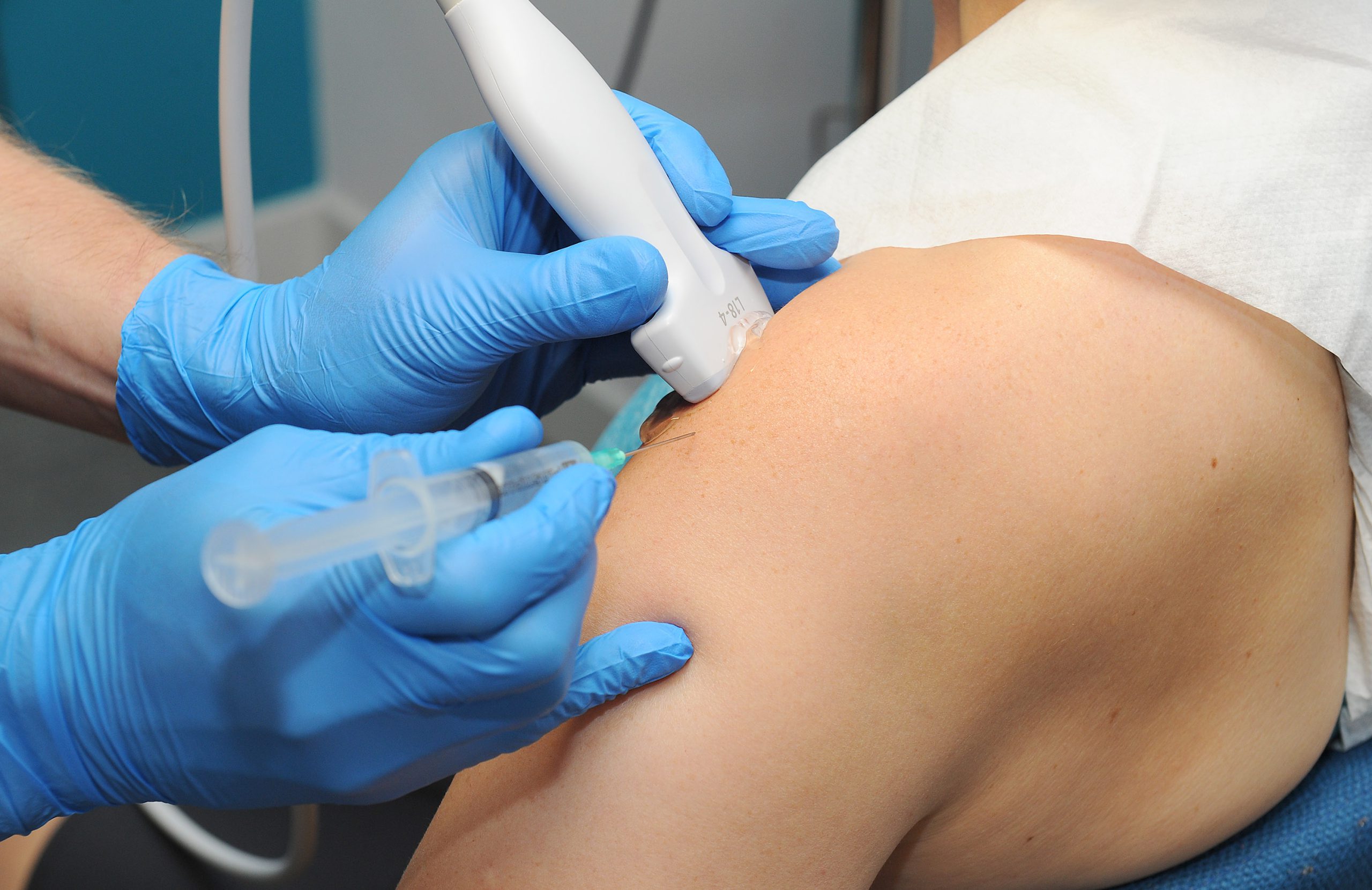Barbotage for Calcific Tendinitis
Calcific Tendinitis is a condition where calcium deposits form within a tendon. It is most commonly found in the rotator cuff tendons in the shoulder. The condition goes through various phases and is often not painful until the body starts to reabsorb the calcium. At this stage it can be exquisitely painful and typically seems to come on without any particular trigger. Ultrasound scanning is very good at assisting in this diagnosis. At this point a simple steroid injection can provide effective pain relief. The body can then go through a period of re-absorbing the calcium and the condition resolves in time.
For some people, the condition does not resolve at this stage. Either as the initial procedure, or if the condition does not respond to a steroid injection, a procedure known as barbotage can be undertaken.
Barbotage involves using ultrasound to guide a needle towards the calcification which in turn is used to gently break it up and extract the calcium. Prior to this, the area is numbed using local anaesthetic and generally the procedure is comfortable and well-tolerated. After gently breaking the calcium up, the region is flushed with saline (salt water) and is then aspirated (withdrawn) back out bringing with it the calcium fragments into a syringe.
Following this process, typically a small steroid injection is provided around the area to give pain-relief following the procedure.
Barbotage has been shown to be safe and effective in the treatment of resistant calcific tendinitis.

Barbotage Cost
* Consultation and Ultrasound Scan included in all packages.









